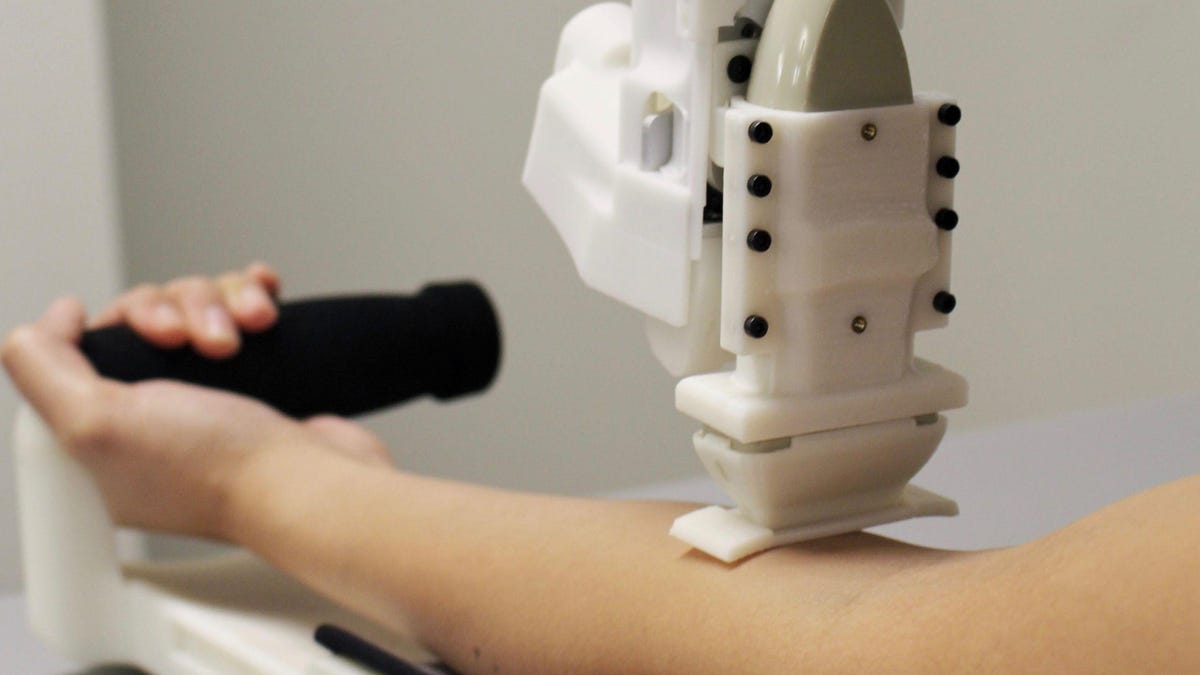This robot excels at drawing human blood
A new medical robot created specifically to take blood samples outperformed human health-care professionals in a clinical trial.

This prototype for the automated blood-drawing robot could end up saving medical personnel a lot of time trying to find veins.
Robots are going to space, cleaning homes, working at hotels, caring for the elderly and giving museum tours. Next, they could be working in hospitals and medical clinics, drawing blood from human patients.
An automated blood-sampling robot created by Rutgers University researchers performed as well or, in some cases, better than human medical professionals doing the same task, the university said Wednesday in a statement.
The first human clinical trial of the blood-drawing robot showed that it could free up time for nurses and doctors to spend more time treating patients, instead of jabbing them with needles. The ultrasound image-guided robot finds the vein, punctures it with a needle and then draws blood. The robot also includes a centrifuge-based blood analyzer.
The results of the trial, which were published in the journal Technology, showed that the robot device had an "overall success rate of 87 percent for the 31 participants whose blood was drawn. For the 25 people whose veins were easy to access, the success rate was 97 percent."
Previous studies have shown that health-care professionals have a success rate of 73 percent in patients without visible veins, 60 percent in patients without palpable veins and 40 percent in emaciated patients, the university said.
"A device like ours could help clinicians get blood samples quickly, safely and reliably, preventing unnecessary complications and pain in patients from multiple needle insertion attempts," Josh Leipheimer, the lead author and a doctoral student at the Rutgers-New Brunswick School of Engineering, said in the university's statement.
In the future, the university said, the device could also be used for other common medical procedures such as IV catheterization and dialysis.

